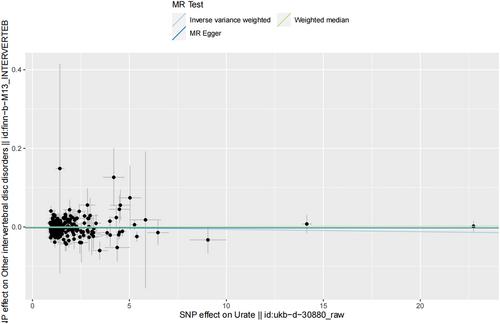The non-causative role of abnormal serum uric acid in intervertebral disc degeneration: A Mendelian randomization study
Abstract
Background
Intervertebral disc degeneration (IDD) is a common musculoskeletal disorder that contributes significantly to disability and healthcare costs. Serum urate concentration has been implicated in the development of various musculoskeletal conditions. While previous observational studies have suggested an association between the two conditions, it might confound the effect of serum urate concentrations on IDD. This Mendelian randomization (MR) study aimed to investigate the causal relationship between serum urate concentration and IDD.
Methods
We performed a two-sample MR analysis using summary-level data from genome-wide association studies (GWAS) of serum urate concentration (n = 13 585 994 European ancestry) and IDD (n = 16 380 337 European ancestry). Single nucleotide polymorphisms (SNPs) significantly associated with serum urate concentration (p < 5 × 10−8) were selected as instrumental variables. The associations between genetically predicted serum urate concentration and IDD were estimated using the inverse-variance weighted (IVW) method, with sensitivity analyses employing the weighted median, MR-Egger, and MR-PRESSO approaches to assess the robustness of the findings.
Results
In the primary IVW analysis, genetically predicted serum urate concentration was unrelated associated with IDD (odds ratio [OR] = 1.00, 95% confidence interval (CI): 1.00–1.00, p = 0.17)). The results remained consistent across the sensitivity analyses, and no significant directional pleiotropy was detected (MR-Egger intercept: p = 0.15).
Conclusions
This MR study provides evidence that there is no causal relationship between serum urate concentration and IDD. It suggests previous observational associations may be confounded. Serum urate levels are unlikely to be an important contributor to IDD.


 求助内容:
求助内容: 应助结果提醒方式:
应助结果提醒方式:


